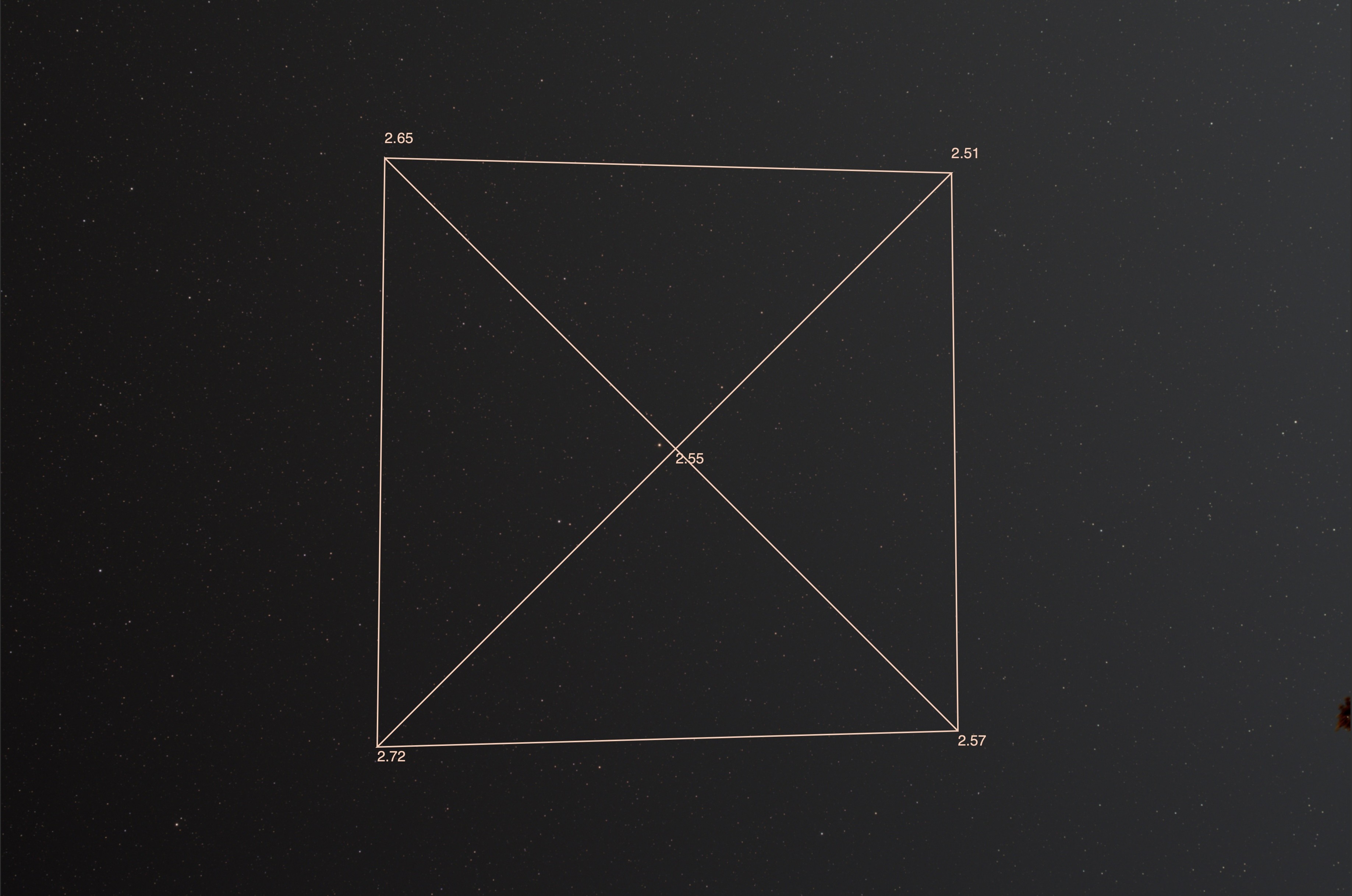Kevin_A No red fringing but coma in two corners, round in 1 corner and elongated in one.
Are you sure this is not caused by tilt from the bayonet mount?
So far, I am finding that 20º or 30º of a turn of a M3 screw will change the tilt enough to affect the shape of corner stars significantly for the 40mm lens (not sure about effect on 135mm lens yet -- waiting for machine shop). M3 screw pitch is 0.5mm, so 1/15th of one turn would be 0.03 mm (much thinner than Tuck tape can correct).
Your problem might not be the glass, but the bayonet flange itself (plastic does not help).
Since you have no way to adjust the lens tilt, you can try experimenting with the ASI2600's tilt plate (but adding back the 6 missing push screws). You should not need to use grub screws since they are a pain to adjust; just use button heads, since they will clear the camera adapters.
For times when I need to adjust camera tilt, I actually bought tthe new ZWO tilit plate pair for the ASI2600 (90mm diameter camera) which you can adjust even when there is a filter wheel blocking the tilt adjustment screws. I also have the Baader that adjusts with edge screws, but it is humongous (68mm thread).
https://agenaastro.com/zwo-m54-tilter-adapter-for-select-zwo-cameras.html
https://agenaastro.com/baader-m68-tilter-wth-9-50-10-25mm-optical-length-and-0-1-tilt-m68-tlt-2458170.html
Tilt definitely screw things up. It has to be flat even before you can even start adjusting backfocus, otherwise the backfocus adjustment will be very confusing (one corner would be corectly backfocus adjusted, while a different corner is not and produces coma).
I would use a tool like Siril and fool with tilt until it is flat before fooling with backfocus. In fact, check the lens with your existing setting to see if one corner or side is off. It need to be more flat than what I posted earlier. I got it to this last night,before clouds came in.

But this is not good enough yet to get good corner stars (at least for me).
With the 40mm, I am seeing backfocus of the order of 0.025mm to affect the corner stars. And this is just an APS-C camera. Again, no way to use Tuck tape. Since I can't leave the Askar backfocus adjuster in a DSLR lens (if I do, I cannot add a camera angle adjuster), and Tuck tape can't give me enough precision (unless by luck), I will have to think of something.
Right now, I am thinking of washers, Tuck tape plus a third adjustment plate. The Blue Fireball washers (multiples of 0.1mm) and Tuck tape (multiples of 0.076mm for rough agjustments, and a "tilt plate" that is used as a backfocus adjuster fot 0.025 mm type adjustments (need it!).
Strictly speaking, the existing tilt plate can work as a fine backfocus adjuster (by moving the screws all by the same amount), but I rather have a different set of screws to decouple the backfocus adjustement from the tilt adjustment, since tilt is so darn important.
Time to move away from bayonets?
BTW, I have started to think about a fixture to measure camera tilt, by using one of my unused OAG to point a laser pen towards to sensor :-).
The felt lined Borg 7065 is 60mm in diameter and is perfect to allow a M54 tube to rotate in it (or go buy a Pegasus camera rotator and do it all from software [INDIGO]). I.e., point two cameras at each other (one is DUT, and the other to see the results), with an OAG in between.
Speaking of Pegasus, did you see the NYX 88 announcement? Still way heavier mount than a RST-135, though. I am still looking for a baby-RST for use with short camera lenses, i.e., a "AZ-GTI" in strain wave form -- preferably with real Harmonic Drive [tm] gears instead of Chinese copycat gears, and Renishaw encoder (instead of Chinese encoders).
Chen